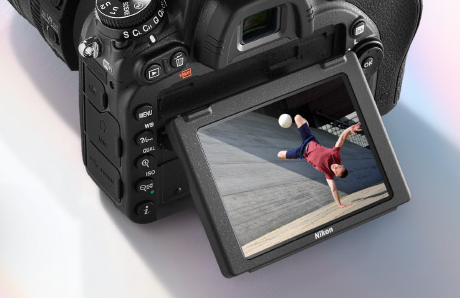 As a photographer, I’m a big believer in the power of the still image. But even I have to admit that videos can be at least as powerful as photographs, if not even more so. Video captures mannerisms, for example, in a way that photography cannot.
As a photographer, I’m a big believer in the power of the still image. But even I have to admit that videos can be at least as powerful as photographs, if not even more so. Video captures mannerisms, for example, in a way that photography cannot.
I try to make a habit of shooting some footage of my kids every few months. Children change so much as they grow, and not just in appearance, but also in the way that they move, and video is the perfect way to chart those changes. The other advantage of video is that it captures audio as well, which adds another layer of interest to the experience.
Today I’m going to give you my top tips for capturing the best videos.
The most common problem we experience with video is camera shake. Professional filmmakers and videographers use elaborate mounts and rigs to keep their cameras steady. Us regular folk need to improvise, and the simplest technique is to put the camera strap around your neck while you shoot and push the camera away from your body so that the strap is taut. In this way your upper body becomes the rig which keeps the camera steady.
If you have a tripod you can put your camera on that, but then you’re limited to a static position. A videographer friend of mine likes to mount his camera on a tripod with the legs retracted and rest the feet on his belt, which gives him the freedom to easily change his angle.
 Some camera lenses have a feature called ‘image stabilization’ which can help to counteract a certain amount of camera shake, and help you to produce smoother videos. And some camera bodies, like the Olympus OM-D E-M10 have image stabilization built in, whereby the actual sensor itself can move independently and compensate for small movements, which is a really handy feature.
Some camera lenses have a feature called ‘image stabilization’ which can help to counteract a certain amount of camera shake, and help you to produce smoother videos. And some camera bodies, like the Olympus OM-D E-M10 have image stabilization built in, whereby the actual sensor itself can move independently and compensate for small movements, which is a really handy feature.
Frame rate is something that tends to cause a bit of confusion, because you’ll often have a few different frame rates available on your camera. The long and short of it is that here in Canada we should use 30 frames per second (fps) as default. If you own a GoPro Hero4 you can also shoot at 60fps or 120fps, which allows you to create beautiful slo-mos. It’s not advised to shoot at higher rates by default however, because all those extra frames make the video look unnatural to our eyes when played back at normal speed.
A lot of the things that make a good photograph apply equally to video, so always be aware of where the light is coming from, and try and get your subject to face in that direction. My first rule of effective composition for photography (as I mentioned in this recent post) is ‘get closer’. This also applies to video, with the added advantage that your audio will be clearer.
Finally, when you’ve shot all those wonderful clips, it is so important to take the time to sit down and actually edit them. In the same way that you should never show anyone every photo you shoot, nobody needs to see every second of every video clip. In the case of both photos and videos, less is almost always more.




some thoughts…
http://www.bestbuy.ca/Search/SearchResults.aspx?query=fluid+head+tripod
https://manfrottotripodparts.files.wordpress.com/2014/12/mva50afoot.jpg
https://www.youtube.com/watch?v=9r3VcFueYw4&t=4s
Thanks for mentioning focus xl! It is undoubtedly one of the big challenges when shooting video. Many cameras are designed primarily for shooting stills, and the autofocus can really work against you when you shoot video. For the most part I shoot video with manual focus, which gives much smoother results. I think manufacturers will, over time, incorporate autofocus modes designed exclusively for shooting video.
Comments are closed.